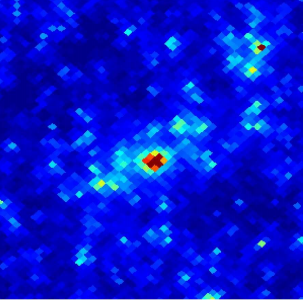Abstract
We have performed a 70 billion dark-matter particles N-body simulation in a 2 h−1 Gpc periodic box, using the concordance, cosmological model as favored by the latest WMAP3 results. We have computed a full-sky convergence map with a resolution of Δθ≃0.74 arcmin2, spanning 4 orders of magnitude in angular dynamical range. Using various high-order statistics on a realistic cut sky, we have characterized the transition from the linear to the nonlinear regime at ℓ≃1000 and shown that realistic galactic masking affects high-order moments only below ℓ<200. Each domain (Gaussian and non-Gaussian) spans 2 decades in angular scale. This map is therefore an ideal tool for testing map-making algorithms on the sphere. As a first step in addressing the full map reconstruction problem, we have benchmarked in this paper two denoising methods: 1) Wiener filtering applied to the Spherical Harmonics decomposition of the map and 2) a new method, called MRLens, based on the modification of the Maximum Entropy Method on a Wavelet decomposition. While the latter is optimal on large spatial scales, where the signal is Gaussian, MRLens outperforms the Wiener method on small spatial scales, where the signal is highly non-Gaussian. The simulated full-sky convergence map is freely available to the community to help the development of new map-making algorithms dedicated to the next generation of weak-lensing surveys.

